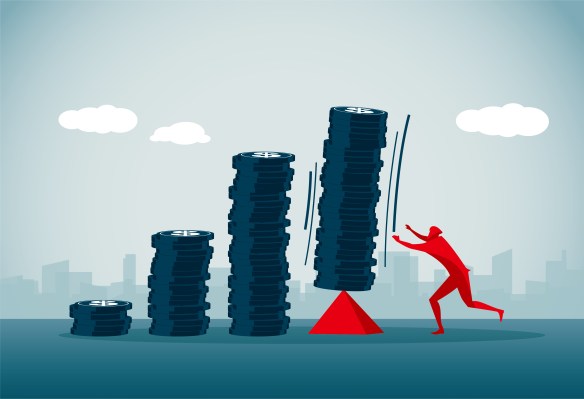It has been almost two weeks since Terraform Labs’ cryptocurrency LUNA and algorithmic stablecoin Terra USD (UST) imploded, bringing down the crypto markets with them.
There have been public conversations from both the creator of the project, Do Kwon, and entities associated with it about the next steps to attempt to revive the Terra ecosystem.
But inside Luna Foundation Guard (LFG), there have been close to no conversations between Kwon and his team with advisers, and UST is “pretty much defunct at this point,” Jonathan Caras, an LFG governing council adviser, told TechCrunch. (LFG was Terra’s Singapore-based nonprofit dedicated to protecting UST.)
“It’s been pretty quiet,” said Caras, one of the four advisers for Kwon’s LFG. According to Caras, there hasn’t been a meeting with the advisers since May 7, when UST began depegging from its (what was supposed to be) stablecoin value, Caras said.
LUNA has fallen over 99% from its peak to $0.0001398, or less than one-hundredth of a cent, while UST fell 92.1% to $0.079 from its $1 peg, according to CoinMarketCap data on Friday. UST’s market capitalization collapsed from all-time highs nearing $19 billion to less than $1 billion.
“There were a lot of brainstorming and conversations [that day], but since then there hasn’t been much of a conversation, or at least one that I’ve been invited to,” Caras said.
The relationship of the advisers at LFG was more a role of being “thought leaders” than operators for UST, Caras noted. They weighed in on how to design or manage the mechanics of transitioning UST from a purely algorithmic stablecoin to a semi-backed, blended basket of crypto assets, so the conversations were more focused on the technical aspects as opposed to actual tactics, which he didn’t have visibility into, he added.
“The truth is, I found my information [about this situation] on Twitter like everyone else,” Caras said.
One of the other advisers for LFG, Kanav Kariya, who is also the president of Jump Crypto, tweeted the following on May 13: “I don’t know exactly what to say. This week has been hell for our entire community. I know we’ll come out of this stronger, but that doesn’t make this any easier.”
Although LUNA and UST plummeted in value, Caras believes that Terra’s ecosystem is far from over. Now, Terra has a governance proposal live for community members to vote on, which would involve renaming the existing network Terra Classic and LUNA Classic (LUNC) and the “rebirth a new Terra blockchain,” Kwon tweeted on May 18.
Terra had — and still has — a massive community, known as LUNAtics, who believe in the long-term success of the ecosystem, even if UST died. “I’m a believer in the longevity of the industry,” Caras said.
The proposal currently has over 147,500,000 votes — which is based on the number of LUNA tokens, not per user — cast in favor of the proposal, with about 27,000,000 votes cast “no with veto” against it.
“This was a massive ecosystem,” Caras said. “Hundreds of different projects with a wide variety of use cases were on there … so even without the success of UST, the user experience and adoption of Terra was second to none.”
UST was one of the largest stablecoins. Since it collapsed, there have been conversations throughout the crypto ecosystem about what this means for the future of stablecoins. As of May 18, the total stablecoin supply was $154.6 billion, down 14% from $180 billion on the day of UST’s collapse, according to data compiled by The Block.
Last week, U.S. Treasury Secretary Janet Yellen pushed for more stablecoin regulation during an annual testimony in front of the Senate Banking Committee, right in the midst of UST struggling to retain its peg.
While some industry participants aren’t fully concerned about the long-term effects of this on stablecoins, others see UST’s demise as unsurprising due to its high-risk framework.
“I do not believe that trust was ever lost for centralized stablecoin users,” Paolo Ardoino, CTO of Tether (USDT), which is the largest stablecoin by market capitalization, previously told TechCrunch. “There will always be a market for stablecoins, as they present an opportunity for traders to interact with the larger crypto ecosystem.”
